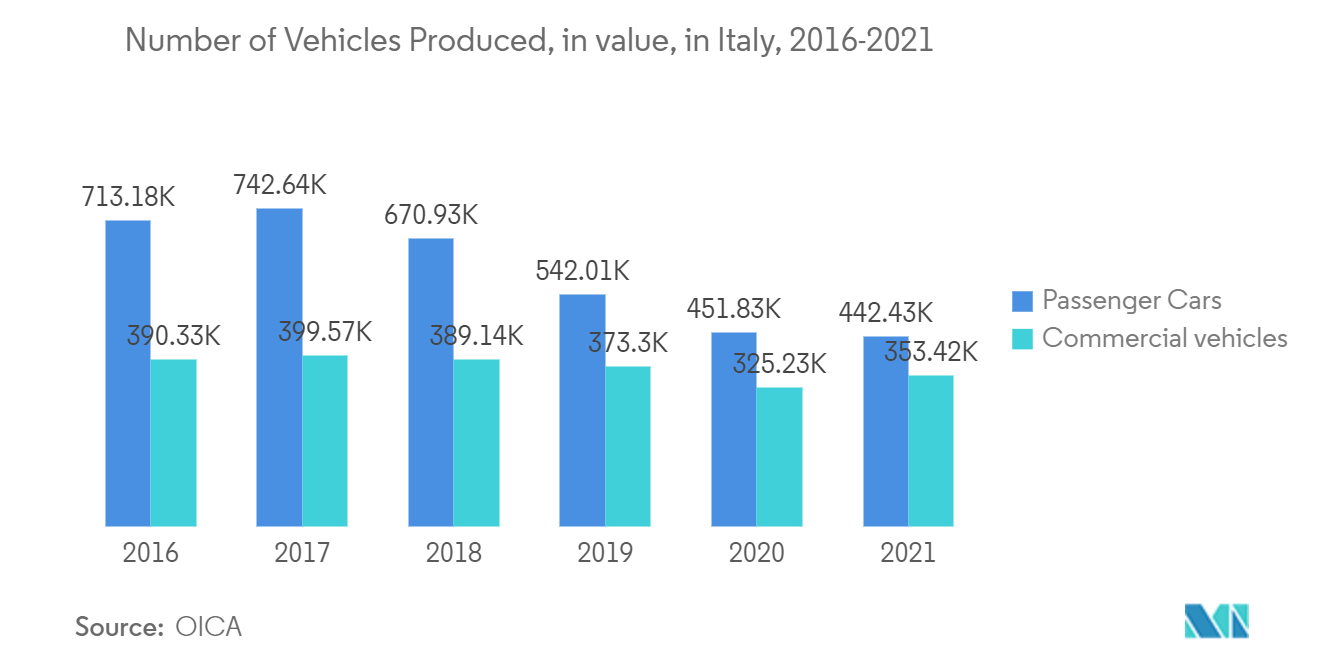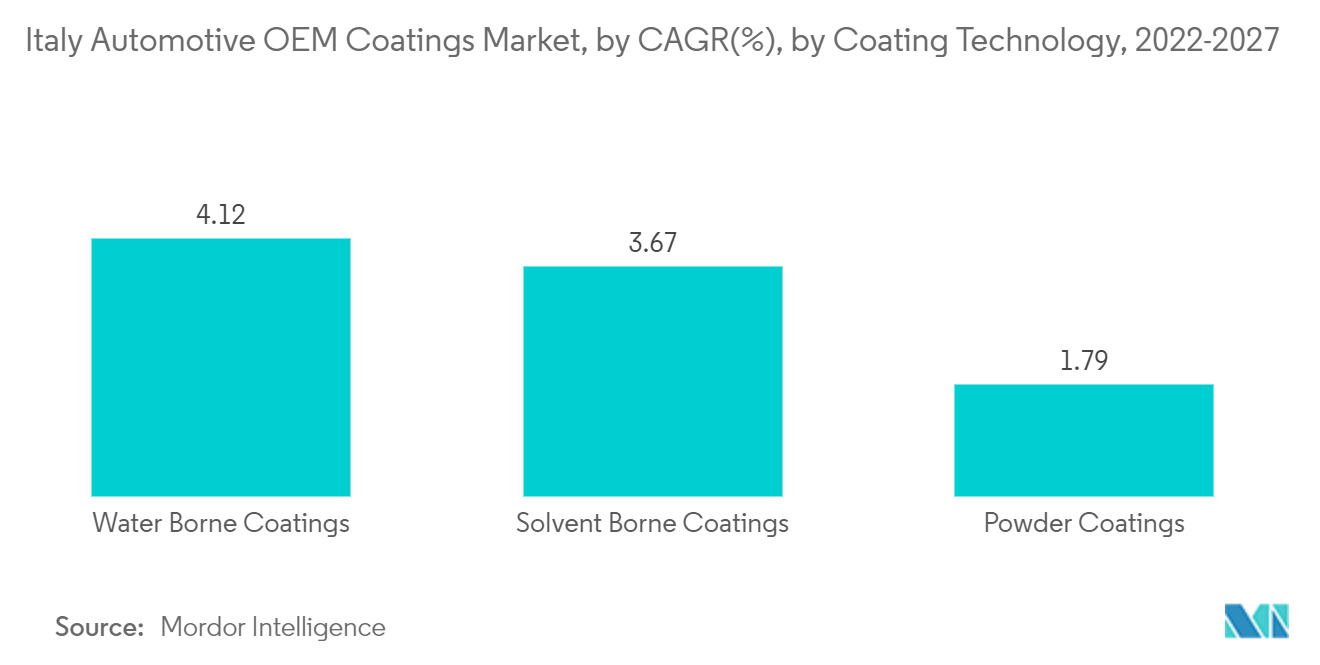Market Trends of Italy Automotive OEM Coatings Industry
This section covers the major market trends shaping the Italy Automotive OEM Coatings Market according to our research experts:
Government Involvement to Boost Market Growth
- The automobile sector is facing an upstream downstream in the market, and supply chains across Italy have a significant impact. While semiconductor shortages are improving slightly, the negative growth is to have an impact till the latter half of 2022 and is expected to recover by 2023.
- Italy Automotive OEM passenger vehicles production volume declined by around 2% to 4,42,432 units as compared to 4,51,826 units produced in 2020. To strengthen the industry, the government is taking several initiatives to support the recovery. Several investments have been made to support the automotive OEM sector in Italy.
- With a significant focus on sustainable solutions, including electric and hybrid vehicles, a positive shift toward EV production is increasing. With a focus on automobile standards, the government is implementing various policies and initiatives, launching incentives and funding programs to reduce dependency on petrol and diesel vehicles in the region.
- For instance, in 2022, Italy witnessed significant growth in electric vehicle registrations. This is because of the support offered by the government in the name of commercial grants, which are given to EV owners who purchased their vehicles between January 1, 2021, and December 31, 2021. The tax benefits included exemption from paying ownership tax for five years and a 75% reduction in tax afterward.
- Moreover, in 2022, the Italian government has planned to offer around EUR 6000 subsidy to consumers planning new electric car purchases. This is in line with achieving zero-emission mobility in the country.
- Moreover, to reduce semiconductor shortage, in 2022, Italy is in agreement to sign a deal of around USD 5 billion with Intel to build an advanced semiconductor packaging and assembly plant in the country, thus, catering to the demand for semiconductor shortage in the country.
- Therefore owing to the above-mentioned incentives and investments, the automotive OEM market in Italy is likely to grow in the forecast period.

Lower VOC Coatings on the Rise
- Although solvent-borne technology accounts for most of the market, it is predicted to slowly reduce over the forecast period.
- Regulations governing VOC emissions from hazardous air pollutants contained in solvent-borne automotive OEM coatings such as toluene, xylene, ethylbenzene, and methyl ethyl ketone are one of the major factors limiting the expansion of solvent-borne automotive OEM coatings.
- Water-based automotive OEM coatings are becoming increasingly popular due to their environmental friendliness, durability, and performance efficiency. Water-borne automotive OEM coatings are those in which water is used as the diluent or vehicle for the film-forming resins. Water-borne coatings have low volatile organic compounds (VOC) and high solid levels. They offer good durability, chemical resistance, and color retention.
- For instance, mild co-solvent reducers and additives are being developed to improve water-based coatings' performance and drying times.
- Moreover, water-borne acrylic alkyd hybrids provide good clean-up and low VOC levels, along with good leveling and durability. The trend is to reduce the content of coalescing and process solvents more, often targeting close to zero VOC to meet regulatory demands in the critical OEM market, which includes passenger vehicles, heavy trucks, and light commercial vehicles, among others.
- The increasing adoption of waterborne automotive coatings is due to their physical and chemical qualities, such as high chemical resistance, low processing temperature, and solvent-free formulations.
- Owing to the above-mentioned factors, waterborne technology is expected to grow significantly during the forecast period.


